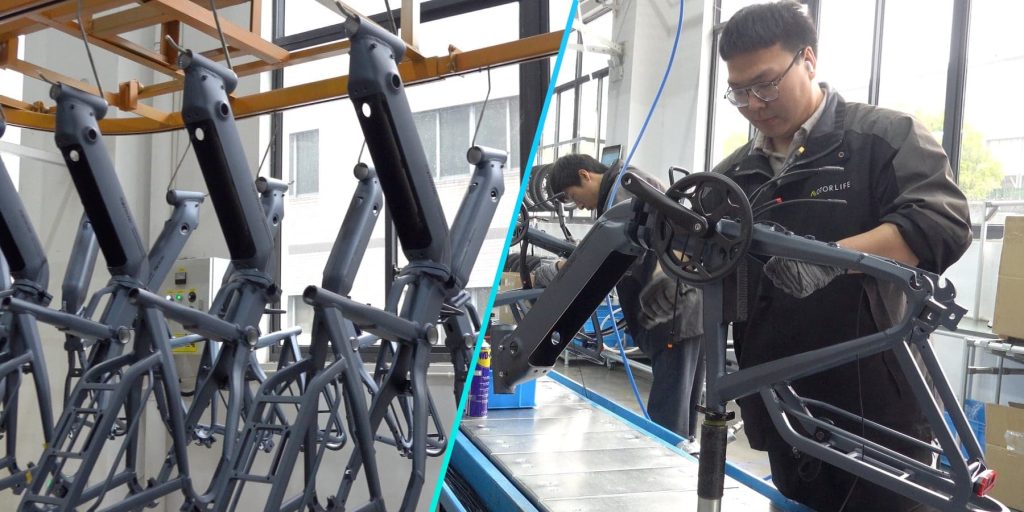With the flick of a Sharpie marker, new tariffs on goods imported from Canada, Mexico, and China were imposed this morning and will take effect next week on February 4, 2025. According to President Trump, the tariffs are intended “to protect Americans”, though nearly all economists agree that they will result in higher prices for consumer goods and increased inflation, devaluing the US dollar.
The Trump Administration’s new 25% tariffs on goods from Canada and Mexico are larger than the 10% additional tariffs on Chinese goods, but the latter will have the biggest impact on the electric bicycle industry in the US.
Electric bicycles have grown in popularity among Americans over the last decade, offering an accessible and affordable alternative to cars and public transportation. They’ve also proven popular among recreational riders and those seeking the fun of fitness on an e-bike, which can be more enjoyable and last longer than leg-powered rides alone.
But now the US electric bike industry is bracing for potential price increases following President Trump’s new executive order imposing a 10% tariff on US imports from China. With the majority of electric bicycles and their components manufactured in China, the tariff is expected to impact both retailers and consumers, adding further strain to an industry still facing the cascading challenges of supply chain frustrations followed by overstock issues.

China dominates global e-bike production, supplying a significant portion of the US market with both complete electric bicycles and key components like motors, batteries, and controllers.
Industry estimates suggest that over 90% of e-bikes sold in the US are either fully assembled in China or contain Chinese-made parts, making them particularly vulnerable to new trade restrictions.
With an additional 10% import tariff coming into effect soon, US e-bike brands will either need to absorb the extra cost or pass it on to consumers, potentially leading to price increases across many popular models.
Make no mistake – these tariffs are not paid by Chinese exporters of electric bikes, but rather by the American companies that import them. That directly increases the cost of goods for US e-bike retailers, which usually results in increased prices.

Tariffs placed on Chinese goods, including electric bikes, are not a new phenomenon. The US e-bike industry has been navigating these tariffs since Trump’s first presidency, with those tariffs largely continuining throughout the Biden Administration from 2021 to 2025 as well, despite periods of tariff exemptions coming and going.
In the past few years, we’ve seen cases of the additional cost being passed on to consumers, but on rare occasions, we’ve also seen e-bike companies opt to absorb the increased cost and avoid raising prices.
With so much experience navigating the choppy waters of China tariffs over the last few years, many US e-bike companies have taken steps to mitigate the impact of new rounds of tariffs like these. Several major brands have been working to diversify their supply chains, moving production to other countries such as Taiwan, Cambodia, Vietnam, and other areas with favorable economic conditions or incentives.
However, shifting away from China is neither quick nor easy, as the country remains a dominant producer with established manufacturing infrastructure. E-bike importers will likely also consider applying for tariff exemptions, as was the case under previous trade restrictions. However, this is a complex and uncertain process, with no guarantees of whether or how long such exemptions could be granted.

The US has seen rapid growth in e-bike adoption, with many cities and states launching incentive programs to encourage e-bike use as a sustainable transportation alternative. Price increases caused by tariffs could slow adoption, particularly among budget-conscious consumers who rely on e-bikes as an affordable commuting solution.
As the new tariffs take effect, manufacturers, retailers, and consumers will surely be watching closely to see how the industry responds. Some companies may adjust pricing strategies, shift production, or lobby for relief, while consumers may face difficult choices between absorbing higher costs or delaying purchases.
The long-term impact of these tariffs remains uncertain, but for now, one thing is clear: some e-bikes in the US are about to get more expensive.
Read the full article here


